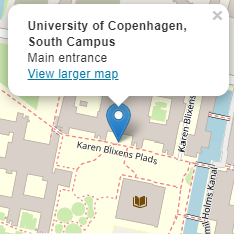Multicultural London English in West London
Rosie Oxbury (PhD student at Department of Linguistics, Queen Mary University of London) explains her PhD project and presents some initial findings.
Abstract
In this presentation I will explain my PhD project and present some initial findings. The PhD is a variationist sociolinguistic project comparing the use of Multicultural London English (MLE) features in an area of West London to previous research from East London.
Multicultural London English (MLE) is described as a multiethnolect according to Clyne’s (2000) definition. Cheshire et al. (2011) describe MLE as an “ethnically neutral” language variety, whereby innovations are initiated and led by young people of immigrant background but their White British peers also participate in the changes. Although the variety has been named “Multicultural London English”, to date the London-based multiethnolect research has only been carried out in East London (but see research in Manchester and Birmingham by Drummond (2016) and Khan (2006)).
This project investigates whether MLE is spoken by young people from elsewhere in London (i.e. non-East), and whether there is evidence of different multiethnolect features being used by the adolescents there. It is plausible that in an area where a different range of languages is spoken compared to East London, language change might follow a different path (Mufwene 2001). To answer these questions, data has been collected from adolescents (aged 16-20) and young children (aged 5-7) from a neighbourhood in Ealing, West London. The data comprise speech recordings (interviews and self-recordings) and notes from participant observation.
While I am in Copenhagen, I am working on two features which have not yet been analysed in MLE, and I will present my findings so far for these variables. It seems that the West London adolescents participate in the same changes as East London adolescents in terms of phonetics and syntax. But they also have two additional features: frication of the voiceless velar stop /k/; and the use of wallah. I will tentatively suggest reasons why this might be the case.
References
Cheshire, J., Kerswill, P., Fox, S., & Torgersen, E. (2011). Contact, the feature pool and the speech community: The emergence of Multicultural London English. Journal of Sociolinguistics, 15(2), 151–196.
Clyne, M. (2000). Lingua franca and ethnolects in Europe and beyond. Sociolinguistica, (14), 83–89. Drummond, R. (2016). (Mis)interpreting urban youth language: white kids sounding black? Journal of Youth Studies, (Journal Article), 1–21.
Khan, A. (2006). A sociolinguistic study of Birmingham English: Language variation and change in a multi-ethnic British community. PhD thesis. University of Lancaster.
Mufwene, S. (2001). The ecology of language evolution. Cambridge: Cambridge University Press

